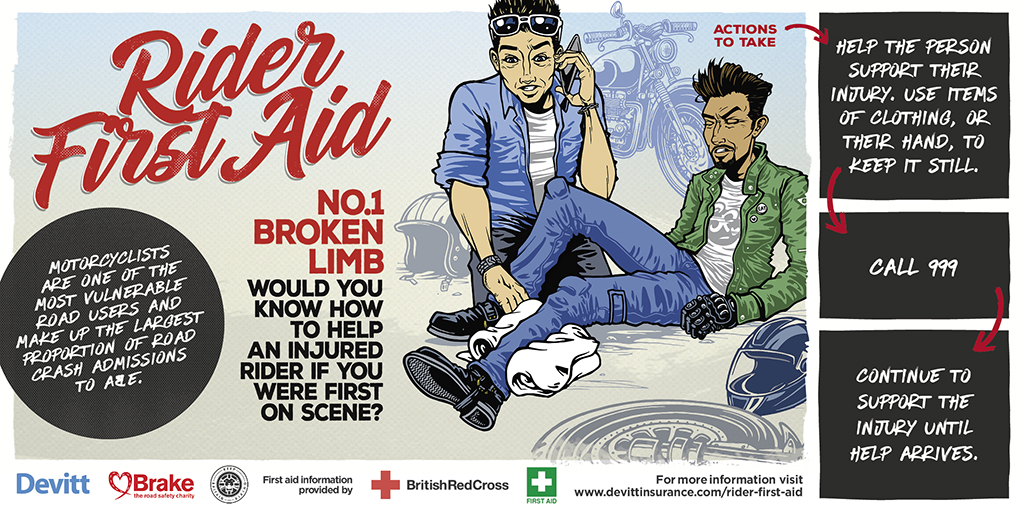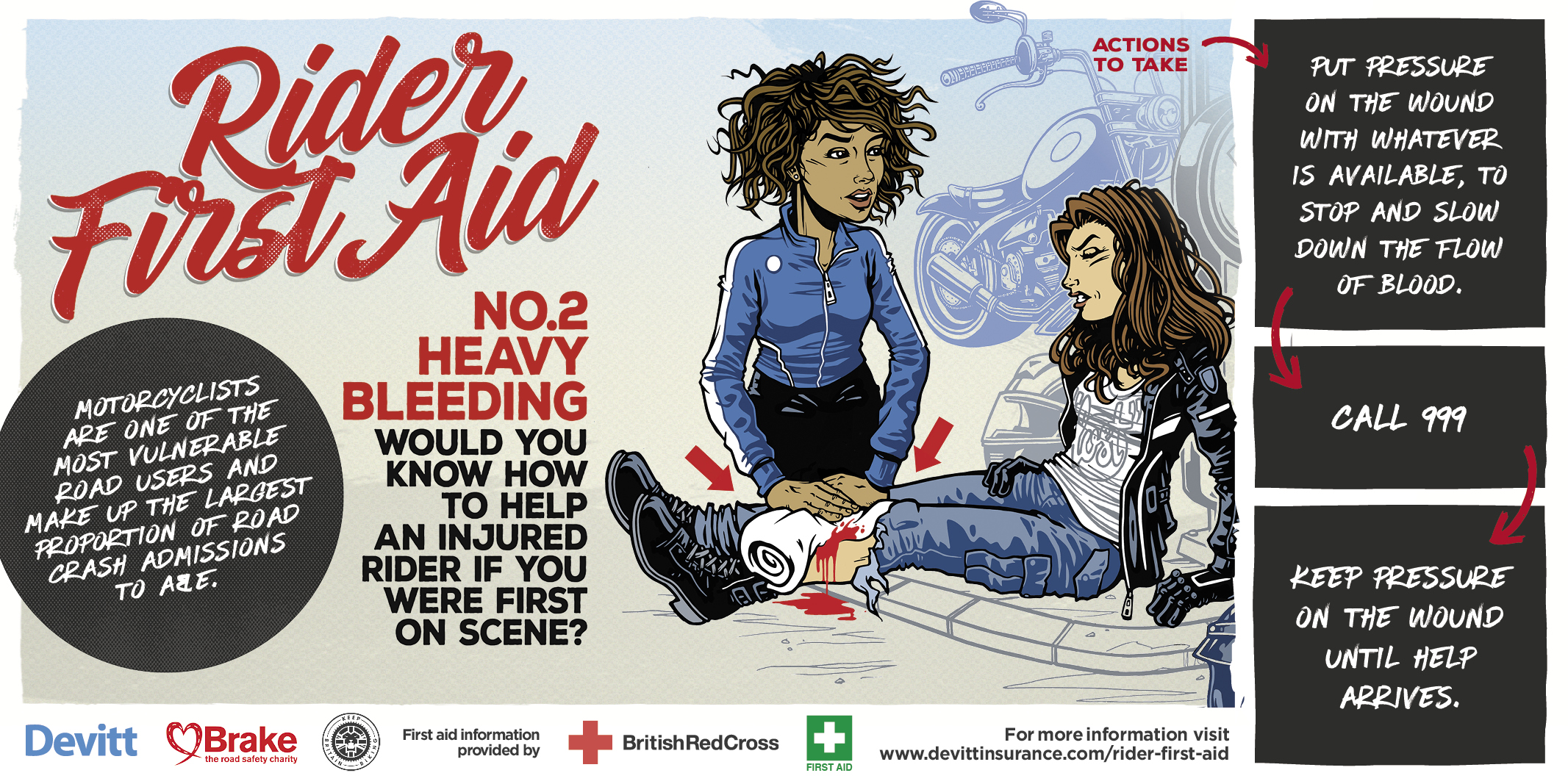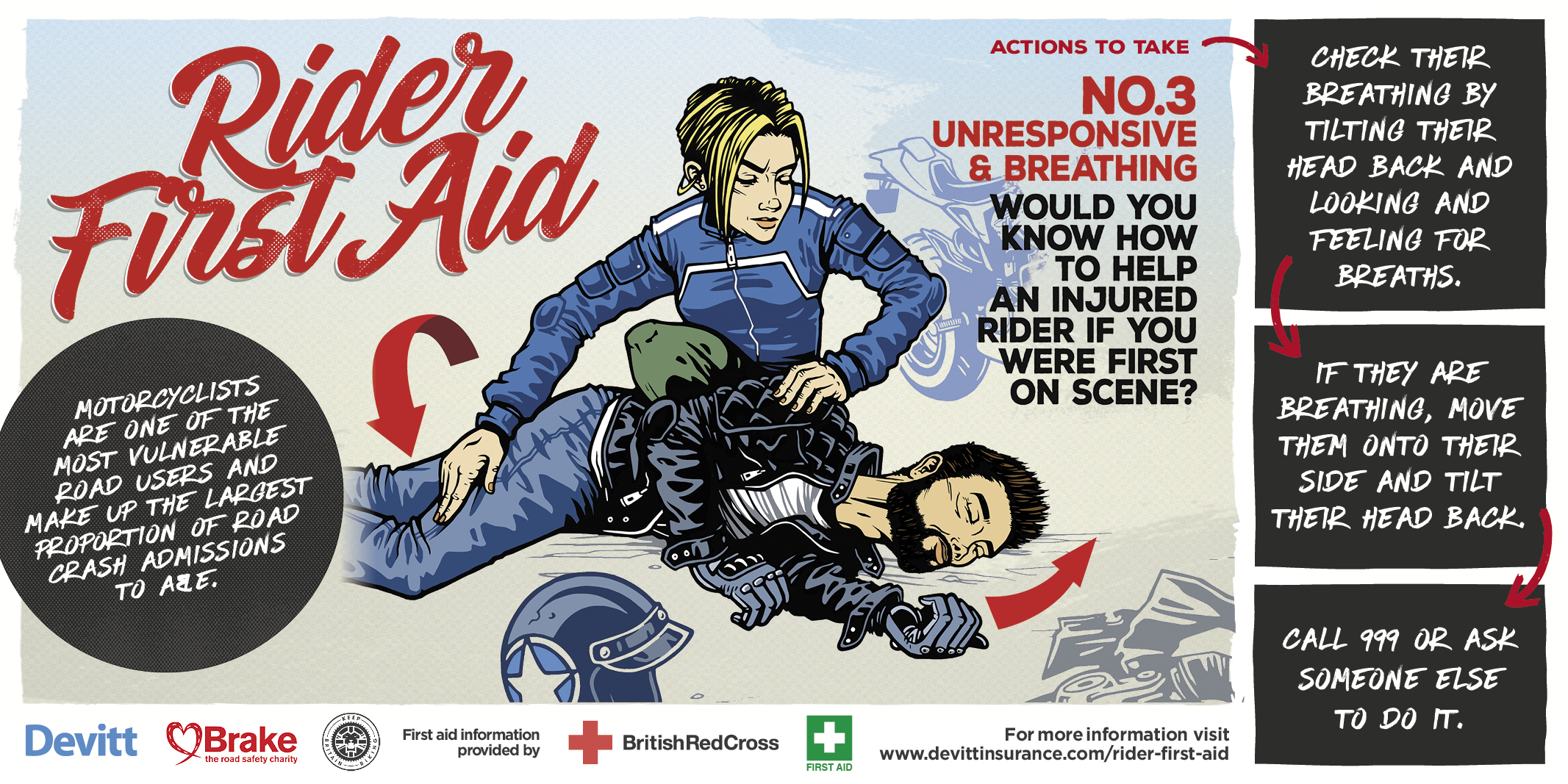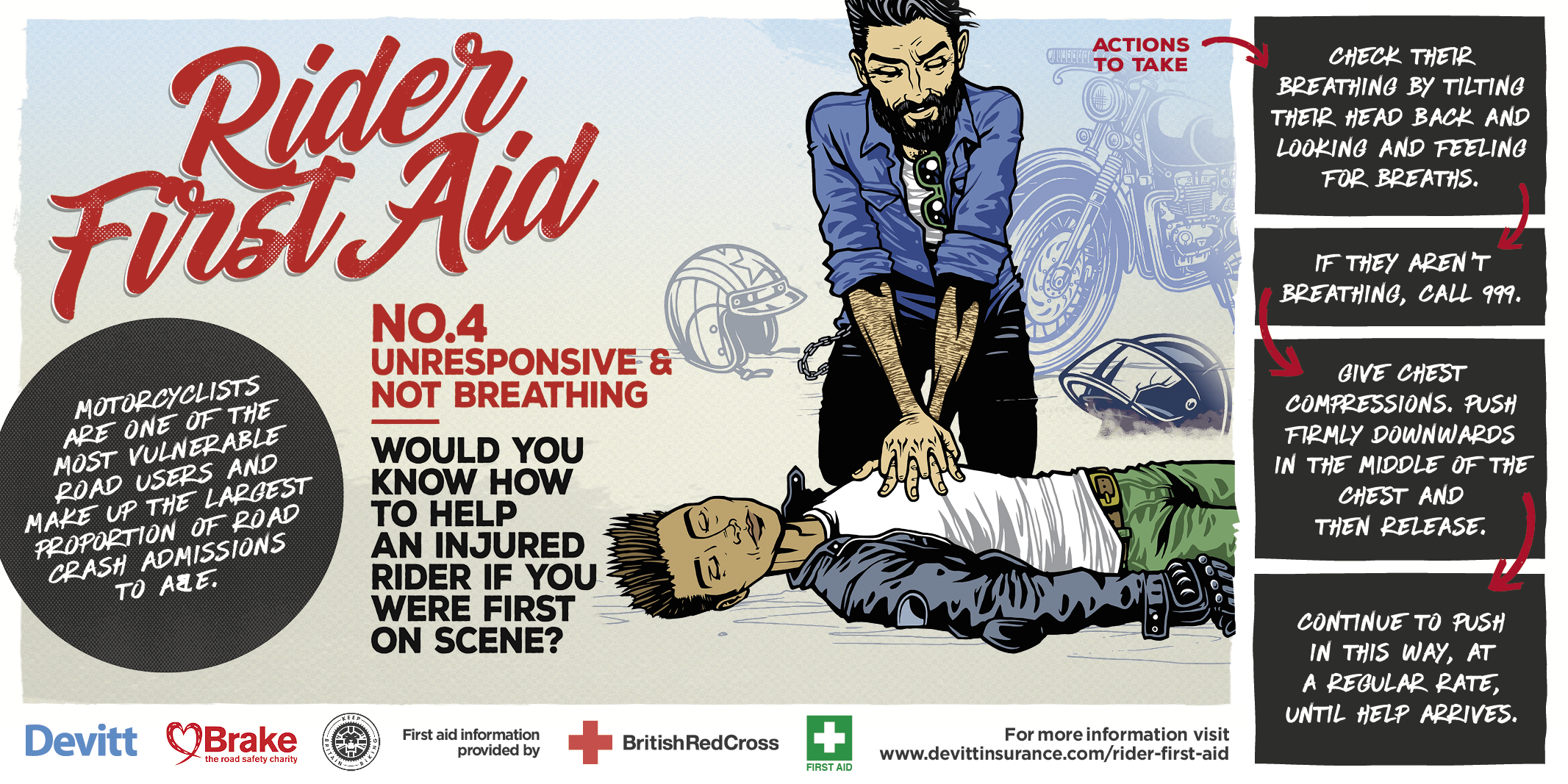Motorcyclists are one of the most vulnerable road user groups and account for largest proportion of road crash admission to A&E – but would you know how to help an injured rider if you were first on the scene?
From our recent survey focusing on motorcycle safety in the UK, we found that from our 3,000 respondents over 70% of bikers knew someone who had been injured on their biker. It’s no surprise that 76% had taken first aid training and 80% felt confident to use their skills at the scene of an accident, however it always pays to be prepared.
Here at Devitt, we’ve been working closely with British Red Cross to give you some useful advice to deal with some of the most common injuries from motorcycle collisions including broken bones, heavy bleeding and unresponsiveness.
Take a look below at our top tips…

You’re first on the scene to an incident involving a motorcyclist. The rider has a broken limb…
If an arm is broken, encourage the rider to support it with their other hand (if possible).
If a leg is broken then support it above and the injury with any soft material available.
Try to prevent all unnecessary movement. Don’t try to move the injured rider unless it’s absolutely necessary.
Call 999 or ask someone else to.
Stay with the rider until help arrives.

You’re the first on the scene to a road incident that involves a fellow motorcyclist, you can see that the rider is bleeding heavily. These are the important actions to take…
Put pressure on the wound with whatever is available to stop or slow down the flow of blood. Essentially, you are acting as a plug to stop the blood escaping.The pressure you apply will help the blood to clot and stop the bleeding.
If there is anything embedded in the wound, DO NOT remove it. It is helping to plug the hole and stop the blood flow. Instead, apply pressure around the object.
Call 999 or ask someone else to.
Keep applying pressure until help arrives.

You’ve just arrived at the scene of a road incident, you can see that the rider involved in unresponsive but still breathing. These are the important actions to take…
Check their breathing by tilting their head back and looking and feeling for breaths.
When a person is unresponsive, their muscles relax and their tongue can block their airway so they can no longer breathe. Tilting their head back opens the airways by pulling the tongue forward.
If they are breathing, you will see their chest moving and you may hear their breath or feel it on your cheek. If they are breathing, move them onto their side and tilt their head back.
This will help to keep their airways open and any blood or vomit to drain out.
If you think they might have injured their neck or back try to keep them in a straight line when turning the. If possible, get someone to help you turn them.
Call 999 ASAP or ask someone else to.

You reach the victim you quickly realise they’re unresponsive and not breathing. Please follow these steps very carefully…
Check breathing by tilting their head back and looking and feeling for breaths.
When a person is unresponsive, their muscles relax and their tongue can block their airway so they can no longer breathe. Tilting their head back opens the airway by pulling the tongue forward.
If they are not breathing, their chest and stomach will not be moving and you will not hear or feel their breaths.
If they are not breathing, call 999 as soon as possible, or ask someone else to do it!
Give chest compressions: push firmly downwards in the middle of the chest and then release. Continue to push in this way at a regular rate until help arrives.
Chest compressions keep blood pumping around their body helping to keep vital organs, including the brain, alive.